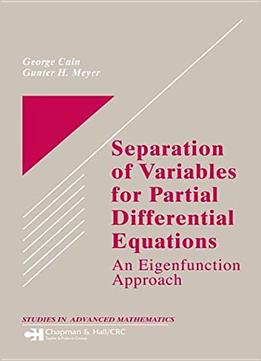
Separation Of Variables For Partial Differential Equations
by Cain George /
2005 / English / PDF
6.9 MB Download
Separation of variables is a solution method for partial differential equations. While its beginnings date mback to work of Daniel Bernoulli (1753), Lagrange (1759), and d’Alembert (1763) on wave motion (see [2]), it is commonly associated with the name of Fourier (1822), who developed it for his research on mconductive heat transfer. Since Fourier’s time it has been an integral part of engineering mathematics, mand in spite of its limited applicability and heavy competition from numerical methods for partial mdifferential equations, it remains a well-known and widely used technique in applied mathematics. Separation of variables is commonly considered an analytic solution method that yields the solution of certain partial differential equations in terms of an infinite series such as a Fourier series. While it may be straightforward to write formally the series solution, the question in what sense it solves the problem is not readily answered without recourse to abstract mathematical analysis. A modern treatment focusing in part on the theoretical underpinnings of the method and employing the language and concepts of Hilbert spaces to analyze the infinite series may be found in the text of MacCluer [15]. For many problems the formal series can be shown to represent an analytic solution of the differential equation. As a tool of analysis, however, separation of variables with its infinite series solutions is not needed. Other mathematical methods exist which guarantee the existence and uniqueness of a solution of the problem under much more general conditions than those required for the applicability of the method of separation of variables. *Converted from CHM.











